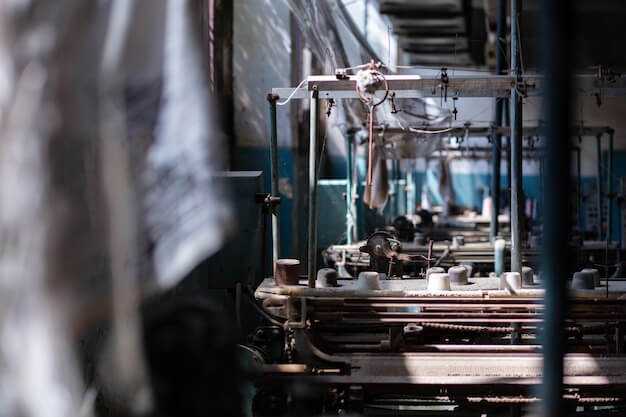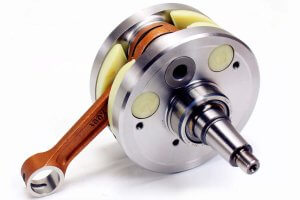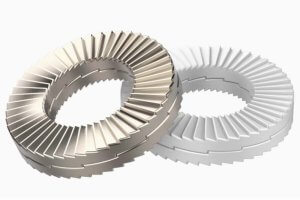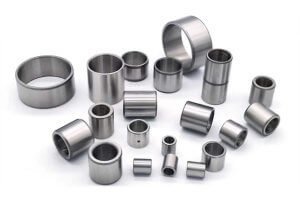Introduction to CNC Machining and Its Correlation with Material Selection
In the realm of advanced manufacturing, Computer Numerical Control (CNC) machining stands as a pivotal technique. Simplifying what would otherwise be complex manual work, CNC machines automate design tasks by interpreting 3D instructions from a computer and applying them onto selected raw materials to create accurately detailed components. However, their stringency in accuracy significantly relies on the material being worked upon. Various materials exhibit different physical properties, notably thermal expansion, which directly impacts machining precision.
- Nature of Material: Different materials have varying rates of thermal expansion — the tendency for volume change due to temperature fluctuations.
- Thermal Expansion Impact: These alterations affect component dimensions—especially during high-precision operation, whereby even minor changes can lead to noticeable inaccuracies.
- The Need for Correct Material Selection: Optimizing material selection — considering thermal stability soon becomes critical when stringent dimensional tolerances are required.
In a nutshell, mindful material choice is instrumental to ensuring accurate performance during CNC machining process.
Understanding Material Selection: An Essential Factor for CNC Machining Accuracy
The accuracy of Computer Numerical Control (CNC) machining processes is influenced heavily by the type of material used. This choice has a direct bearing on critical factors like thermal expansion, which can distort shapes and compromise precision if not accounted for correctly. For instance, metals such as copper, steel, or aluminum have different thermal expansion coefficients. Copper expands more when heated compared to steel while aluminum shows even greater expansion when subjected to the same conditions.
-
This variation in behavior delivers varying results during machining. If an intricate component is carved from a block of aluminum using precise CNC movements based on room-temperature measurements, the increase in size due to heat generated by high-speed cutting could lead to substantial dimensional inaccuracies. In contrast, if you use a steel workpiece with its lower coefficient, the deviation will be less pronounced under identical process conditions.
-
Selecting the appropriate material hence plays a crucial role in determining the outcome of CNC machining and affects everything from achievable tolerances to the required post-processing steps. The aim should always be to choose materials wisely, keeping in mind their inherent characteristics and how they interact with the planned machine operation to ensure optimal performance and tight tolerance control.
Thermal Expansion and Its Impact on CNC Machining Accuracy
In the realm of physics, thermal expansion refers to the intuitive tendency for matter—in this case, metal—to change its shape, area, or volume in response to changes in temperature. It’s significant to note that different materials have varying coefficients of thermal expansion, which leads to disparity in their behavior under heat application.
Hence, understanding the specific coefficient of thermal expansion for given materials is essential to ensure optimal calibration of tool paths, thereby offering improved precision and quality control in the production of CNC machined parts.
Understanding the Impact of Ignoring Thermal Expansion in Material Selection for CNC Machining
Ignoring the effects of thermal expansion in material selection for CNC machining can have significant consequences on the accuracy and performance of the final product. Here is a step-by-step analysis of the impact of ignoring thermal expansion:
1. Thermal Expansion Overview:
- Thermal expansion refers to the tendency of materials to expand or contract in response to changes in temperature.
- When a material is heated, its molecules move more vigorously, causing the material to expand. Conversely, cooling the material causes contraction.
2. Importance of Considering Thermal Expansion:
- In CNC machining, ignoring thermal expansion can lead to dimensional inaccuracies and poor fit between components.
- Materials with high thermal expansion coefficients can experience significant size changes when exposed to temperature variations, resulting in part distortion and misalignment.
3. Balancing Material Properties:
- While it is important to prioritize materials with low thermal expansion coefficients, other mechanical properties must also be considered.
- Materials with low thermal expansion coefficients may not always possess the desired strength, hardness, or other necessary properties for the specific application.
- Therefore, a balance must be struck between minimizing thermal expansion and meeting the required mechanical specifications.
Understanding and accounting for thermal expansion in material selection for CNC machining is crucial for achieving accurate and reliable results. By considering the effects of thermal expansion, machinists can choose materials that minimize dimensional changes and ensure the proper fit and functionality of the final product. To access professional CNC machining services and expert advice on material selection, you can rely on our online CNC service or precision machining service.
Choosing Materials with Low Thermal Expansion Coefficients
The precision of CNC machining largely hinges on the choice of materials, specifically ones exhibiting low thermal expansion coefficients. One key approach to enhancing the accuracy of CNC operations lies in selecting materials known for exhibiting minimal size variations under temperature fluctuations. There are several factors you should consider during material selection. Firstly, research and understand the coefficient of thermal expansion associated with a variety of materials—metals like stainless steel or Aluminium possess moderate thermal expansion values, while ceramics and carbon fibers record relatively lower figures. Secondly, assess the working temperature conditions that your machine component will be exposed to. This information helps determine if a material’s thermal behavior aligns with operational necessities.
- Select high-strength metals since they can withstand elevated temperatures without significant dimensional changes.
- Consider materials such as Invar alloy, whose extremely low thermal expansion property qualifies it as an ideal material when preciseness is paramount.
- Look into using composite materials which combine properties of different constituents ensuring balance between structural integrity and thermal stability.
Rigorous material testing under fluctuating temperature ranges before final application goes a long way in assuring performance consistency and mitigating manufacturing errors due to inadvertent thermal expansion.
Balancing Other Mechanical Properties While Prioritizing Lower Thermal Expansion
When selecting materials for CNC Machining, it’s crucial to consider a range of mechanical properties while also prioritizing lower thermal expansion. Mechanical properties such as strength, hardness, toughness, elasticity, plasticity, brittleness, and ductility play a substantial role in the machining process and final product performance. Nevertheless, minimizing thermal expansion is often paramount to ensure dimensional stability across varying temperatures.
To illustrate this balance, let’s use an example of Steel and Aluminum selection for precision parts generation. Both are excellent choices for their respective strengths; steel exhibits high toughness and durability whereas aluminum showcases light-weightiness and excellent machinability. But when considering thermal expansion coefficients – steel has much lower compared to Aluminum, hence providing better measurement accuracy after heat treatment. Nonetheless, due to Aluminum’s superior machinability factor, sometimes companies choose aluminum while compensating for its higher thermal expansion by optimizing machining parameters like cooling methods or cutting speeds. This perfectly exemplifies how material selection should strike the perfect chord between all major factors including thermal expansion rate and other vital mechanical attributes.
Other Articles You Might Enjoy
- CNC Machining Tolerances and Material Selection: Precision Engineering Insights
Introduction to CNC Machining, Tolerances and Material Selection CNC machining is a prevalent manufacturing process that entails the use of pre-programmed computer software to dictate the movement of factory machinery…
- The Engineer's Guide to Reducing CNC Machining Time: Material and Tool Selection Strategies
Importance of Reducing CNC Machining Time In the expansive world of industrial manufacturing, Computer Numerical Control (CNC) machining holds a dominant place due to its effectiveness in reducing errors, enhancing…
- Achieving Precision in CNC Machining: The Importance of Material Uniformity and Selection
CNC Machining and the Significance of Precision CNC machining is a manufacturing process where pre-programmed computer software dictates the movement of factory tools and machinery. This process is used to…









